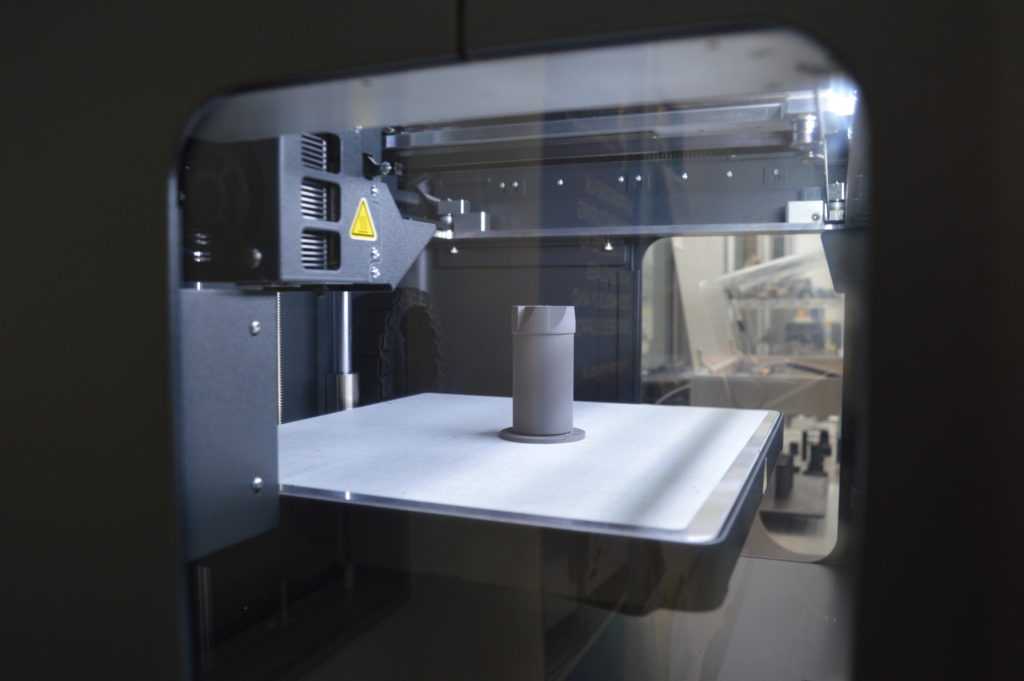A startup out of Purdue University, dubbed Araqev, is using machine learning (ML) to improve quality assurance (QA) for 3D printing. Started by Arman Sabbaghi, an associate professor in Purdue’s Department of Statistics, the software applies ML to point cloud data from scans and design files. This allows the tool to predict and plan future deviations in CAD models, thus resulting in fewer errors. Describing his tool in further detail, the professor said:
“Our software uses these inputs to fit machine learning models that can simulate shape deviations for future printed products. Furthermore, the machine learning models enable our software to derive modifications to the nominal designs, known as compensation plans, so that when the modified designs are printed, they will exhibit fewer shape deviations compared to the case when the original designs are printed. This means that our software enables a comprehensive platform for a customer to improve quality for their entire system,”
Quality control has always been a stumbling block for 3D printing. QA methodologies have been developed for production processes like CNC, in which a known material is cut away from a known material. Additive manufacturing (AM), however, builds up parts by solidifying many layers atop one another. The layers could be constructed in novel ways for the same part. They might bond and solidify in completely different ways, depending on the shape of the part, its placement related other components, or location on the bed. Depending on the process, air bubbles, filament ovality, or soot could interfere with printing.
Therefore, when it comes to 3D printing, there is an increased need for QA as compared to other technologies. I personally believe that we need to QA every single object coming off of a printer. This is why I’m so excited about Lumafield but also Araqev.
Based on a paper published in Technological Forecasting and Social Change in 2016, Sabbaghi suggests that quality control can lead to $2 billion in global losses annually for metal AM. The opportunity for Araqev is therefore potentially huge.
So far, Sabbaghi and his team demonstrated the possibilities using a Metal X 3D printer from Markforged. According to the company, Araqev’s algorithms were able to cut inaccuracies in the shape of the 3D printed parts by a significant amount.
“The power and cost-effectiveness of our algorithms were most recently demonstrated via two validation experiments for the Markforged Metal X 3D printer involving 17-4 PH stainless steel products,” Sabbaghi said. “Our algorithms reduced shape inaccuracies by 30% to 60%, depending on the geometry in at most two iterations, with three training shapes and one or two test shapes for a specific geometry involved across the iterations.”

A cutting tool being made on a Markforged Metal X.
It’s early days yet for the company, but these kinds of numbers seem quite powerful. Also the progress is remarkable given the limited data that they have used. The company’s go-to-market aims to leverage the distribution channels of a 3D printer OEM to sell Araqev software, licensing it to these partners to quickly grow.
Of course, this is a very limited and highly dependent way to approach the market. In some ways, we’ve seen this previously with companies like SABIC reliant on Stratasys to sell its ULTEM materials into the market. It is a very fast, low-capital, low-headcount method to approach a new market and scale. However, success would be highly dependent on how OEMs incentivized their channel and sales people to sell the software. If these incentives were not considerable or well-delineated the company could fail through no effort of its own.
Establishing good partnerships with a firm that considers this as a way to sell to an installed base, while incentivizing its people well, then Araqev could be successful. However, the startup will be dependent on the OEM’s efforts and rely on the OEM for revenue. Not only does Araqev not own the customer, but it will gather little market intelligence in this way. For QA, it would be especially important for the firm to find out from the shop floor what the QA challenges are. Are people working with unique parts or series of parts? How big are those series? How big is the variability. Is labor power a problem? This is all information that would really help them meet the market.
This is a limiting business model and go-to-market that may seem like a good approach, but which has many risks. Generally, however, this is an encouraging sign especially since every machine learning cowboy will now take a gander at 3D printing and could perhaps help the industry out.
Subscribe to Our Email Newsletter
Stay up-to-date on all the latest news from the 3D printing industry and receive information and offers from third party vendors.
Print Services
Upload your 3D Models and get them printed quickly and efficiently.
You May Also Like
Reinventing Reindustrialization: Why NAVWAR Project Manager Spencer Koroly Invented a Made-in-America 3D Printer
It has become virtually impossible to regularly follow additive manufacturing (AM) industry news and not stumble across the term “defense industrial base” (DIB), a concept encompassing all the many diverse...
Inside The Barnes Global Advisors’ Vision for a Stronger AM Ecosystem
As additive manufacturing (AM) continues to revolutionize the industrial landscape, Pittsburgh-based consultancy The Barnes Global Advisors (TBGA) is helping shape what that future looks like. As the largest independent AM...
Ruggedized: How USMC Innovation Officer Matt Pine Navigates 3D Printing in the Military
Disclaimer: Matt Pine’s views are not the views of the Department of Defense nor the U.S. Marine Corps Throughout this decade thus far, the military’s adoption of additive manufacturing (AM)...
U.S. Congress Calls Out 3D Printing in Proposal for Commercial Reserve Manufacturing Network
Last week, the U.S. House of Representatives’ Appropriations Committee moved the FY 2026 defense bill forward to the House floor. Included in the legislation is a $131 million proposal for...

































